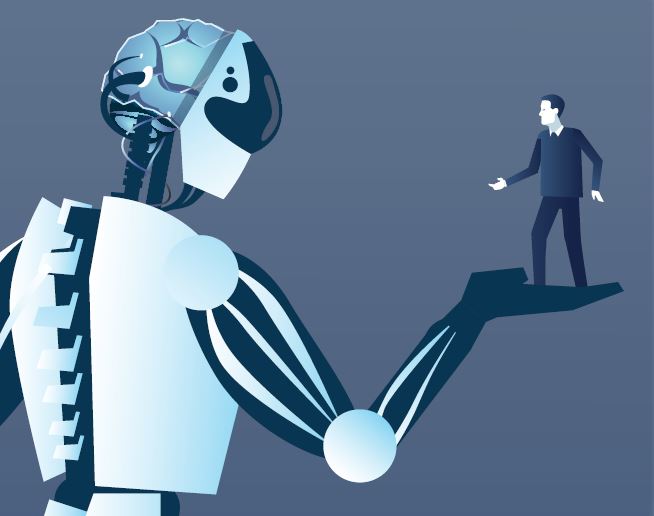
IESE Insight
How humility can outsmart the smart machines
Staying ahead of tech requires that we embrace a set of mindsets and behaviors called NewSmart, whose hallmark is humility.
Over the past few decades, work has grown increasingly automated. Advances in artificial intelligence, the internet of things, virtual reality, robotics, nanotechnology, deep learning, mapping the human brain, and biomedical, genetic and cyborg engineering will continue to revolutionize how most of us live and work. Soon technology will be able to learn as well as teach and program itself.
The broader, more encompassing automation that is coming will affect many more workers than just those performing routine tasks on factory floors. The Smart Machine Age, or SMA, will affect many professionals, potentially being as disruptive and transformative as the Agricultural Age and Industrial Revolution were to generations of workers before us.
We need to get ready. We need a new way of thinking and behaving — a new story — for the SMA.
As I explore in my book, Humility Is the New Smart: Rethinking Human Excellence in the Smart Machine Age, my story has two heroes: a mental model I call NewSmart, which goes hand in hand with humility.
There are also four supporting actors, so to speak; four fundamental behaviors that will help us overcome our limitations:
- quieting the ego;
- managing the self (one’s thinking and emotions);
- reflective listening; and
- otherness (emotionally connecting and relating to others).
These are the NewSmart behaviors. For most of us, these behaviors don’t come naturally. We will have to make some radical changes.
Based on my research into the science of critical thinking, innovative thinking, creativity, and emotional and social intelligence, and from my fieldwork inside high-performance learning organizations, I’ve learned that the best place to start is with one’s personal beliefs, or mental models, changing the way we think in a manner that supports the desired behaviors we seek.
Only by changing how we think about what it means to be “smart” in the SMA can we then change the behaviors that inhibit our ability to excel in the SMA.
Redefining smart
Most of us have been taught to define what it means to be smart and what it takes to succeed based on Industrial Revolution-era thinking that doesn’t account for the latest science of higher-level human thinking and relating. We’re in a new era in which technology will, in many more cases, be smarter than us, and that will affect whether we’ll work, how we’ll work and what work we’ll do.
Clinging to an outdated mentality will stifle our abilities to learn and adapt in the midst of rapid technological advancement, the dynamic global economy and ever-increasing competition for the decreasing number of jobs available for humans.
Our mental models affect how we perceive the world and, in some cases, can actually distort or misrepresent reality. Our models may also greatly differ from other people’s models and other people’s views of reality.
Jack Mezirow, an adult learning expert, explained that “we have a strong tendency to reject ideas that fail to fit our preconception,” but he also explained that we can “transform our frames of reference (mental models) through critical reflection on the assumptions upon which our interpretations, beliefs and habits of mind, or points of view, are based.”
To change our mental model for the SMA, we first need to accept a quality-based definition of being smart — or NewSmart — which I define as excelling at the highest level of thinking, learning and emotional engagement with others that one is capable of doing.
NewSmart is a measure not of what you know or how much you know but of:
- the quality of your thinking, listening, collaborating and learning.
- how good you are at not knowing and decoupling your beliefs (not values) from your ego.
- how good you are at being open to continually stress-testing your beliefs about how the world works.
- how good you are at trying out new ideas and ways of accomplishing your objectives, and learning from those experiments.
A version of this article is published in IESE Insight 35 (Q4 2017).
This content is exclusively for personal use. If you wish to use any of this material for academic or teaching purposes, please go to IESE Publishing where you can purchase a special PDF version of “How humility can outsmart the smart machines” (ART-3098-E), as well as the full magazine in which it appears, in English or in Spanish.


